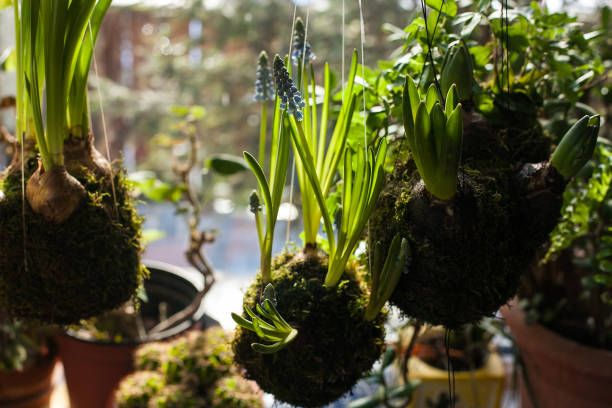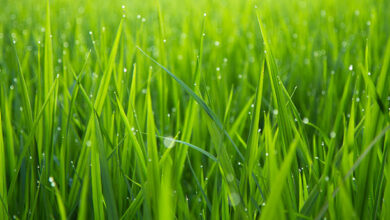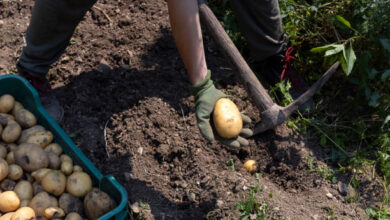
Kokedama Plants: Everything You Need To Know
Have you ever seen a plant growing from a ball of moss and soil? Welcome to the enchanting world of kokedama plants! This traditional Japanese gardening technique creates unique and stylish plant displays that can bring a touch of nature into any home. In this comprehensive guide, we’ll explore the origins, creation, and care of kokedama plants, and discover how to incorporate these living sculptures into your home decor.
What Are Kokedama Plants?
Definition
Kokedama, a Japanese term meaning “moss ball,” is a unique and artistic gardening technique that involves growing plants in a spherical mass of soil and moss. This traditional Japanese art form is often likened to bonsai, as both techniques emphasize aesthetics and natural beauty. In kokedama, the plant’s root system is enveloped in a moist, nutrient-rich soil mixture, which is then wrapped in a layer of moss and secured with string or wire. The resulting moss ball can be displayed on a surface or hung, creating a visually captivating and versatile plant arrangement.
History and Origin
Kokedama, which translates to “moss ball” in Japanese, has its roots in the ancient practice of bonsai. It emerged as a way to present plants in a minimalist and aesthetically pleasing manner. The art of kokedama evolved from the concept of nearai, where plants were removed from their pots and displayed with the roots wrapped in moss. This technique has been embraced by modern gardeners and plant enthusiasts for its beauty and simplicity.
Unique Characteristics
Kokedama plants are distinctive for their appearance. Unlike traditional potted plants, kokedama are grown in a ball of soil covered with moss, held together with string. This method not only showcases the natural beauty of the plants but also creates a striking visual impact. The moss ball can be displayed on a flat surface or suspended in the air, offering versatile decor options.
Types of Plants Used
Several types of plants are well-suited for kokedama. Popular choices include ferns, ivy, and succulents due to their hardy nature and attractive foliage. When selecting plants for kokedama, consider their light and water requirements to ensure they thrive in their mossy homes. Additionally, smaller plants with delicate root systems tend to work best.
How to Create Kokedama Plants
Materials Needed
To create your own kokedama, you’ll need a few essential materials:
– Moss: Use sheet moss or sphagnum moss.
– Soil: A mixture of bonsai soil and peat.
– String: Natural twine or cotton string works best.
– Plants: Choose small, hardy plants that fit well in the moss ball.
You can find these materials at garden centers, craft stores, or online retailers specializing in bonsai and kokedama supplies.
Step-by-Step Guide
- Prepare the Soil: Mix bonsai soil with peat to create a well-draining soil mixture.
- Shape the Moss Ball: Take a handful of the soil mixture and shape it into a ball around the roots of your plant.
- Wrap with Moss: Cover the soil ball with a layer of damp moss, pressing firmly to secure it.
- Bind with String: Wrap string around the moss ball to hold everything in place. Tie off the string securely but avoid cutting off the circulation of the plant.
Common Mistakes to Avoid
Creating kokedama can be a rewarding experience, but it’s important to avoid common pitfalls. Ensure your moss is damp enough to mold around the soil ball but not overly wet. Make sure the string is tight enough to secure the moss but not so tight that it damages the plant. Lastly, choose plants that are compatible with the kokedama method, as not all plants will thrive in this setup.
YOU MAY LOVE TO READ:
Huckleberry Gold Potatoes: A Culinary Treasure
Do Deer Eat Oranges? Understanding Deer Diet Preferences
Caring for Kokedama Plants
Watering and Maintenance
Watering kokedama plants requires a bit of attention. The moss ball should be kept moist but not soggy. To water, submerge the entire moss ball in a bowl of water for 10-15 minutes, then let it drain. Depending on the plant type and environment, you may need to water your kokedama every few days to once a week.
Light and Temperature Requirements
Different plants have varying light requirements. Most kokedama plants prefer indirect light, as direct sunlight can dry out the moss and soil too quickly. Ensure your kokedama is placed in a location that matches the light needs of the plant. Temperature-wise, kokedama should be kept in a stable environment, avoiding extreme temperature fluctuations.
Long-Term Care and Repotting
Kokedama plants may eventually outgrow their moss ball. When this happens, you can either trim the plant to maintain its size or create a new, larger kokedama. Signs that your kokedama needs repotting include roots growing out of the moss ball or the plant becoming top-heavy.
Incorporating Kokedama into Your Home Decor
Display Ideas
There are many creative ways to display kokedama in your home:
– Hanging: Suspend kokedama from the ceiling using decorative hooks or hangers to create a floating garden.
– On Stands: Place kokedama on stylish stands or trays to highlight their beauty.
– Groupings: Arrange several kokedama together for a lush, green display.
Benefits of Kokedama in Home Decor
In addition to their aesthetic appeal, kokedama plants offer several benefits. They bring a touch of nature indoors, creating a calming and serene environment. Plants are known to improve air quality by filtering toxins and releasing oxygen, and kokedama are no exception. Incorporating kokedama into your home decor can enhance both the look and feel of your living space.
DIY Kokedama Projects
Making kokedama can be a fun and rewarding DIY project. Invite friends and family for a kokedama-making party, or create them as unique gifts. Not only will you enjoy the process, but you’ll also have beautiful, living decorations to brighten your home.
Conclusion
Kokedama plants are a beautiful and unique way to incorporate nature into your home decor. From their rich history and distinctive appearance to the simple yet rewarding creation process, kokedama offers endless possibilities for plant lovers. Whether you’re looking to grow your own or simply appreciate their beauty, kokedama plants are sure to add a touch of elegance and tranquility to any space.
Have you tried making kokedama? Share your experiences and photos in the comments below! If you’re inspired to start your own kokedama project, let us know how it goes.




